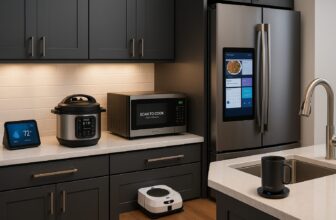

Building your first PC can be daunting. You watched all kinds of tutorials and read all kinds of guides, but for some reason, you worry you might still mess things up somehow. Here are the most common mistakes beginners make, so you can avoid them when you actually start building.
Not Checking Dimensions/Compatibility Before Buying
This is one mistake that happens before actually starting the building process. You go and put together your list of parts, you buy them all, and you get them on your doorstep… only to find that the AIO liquid cooling solution you bought actually doesn’t fit in your case. Or the motherboard you bought is too big for your case. Or you bought an AMD Ryzen 7000 CPU, using the new AM5 socket, only to find that the motherboard you bought only takes older AM4 chips.
You can use tools like PCPartPicker to prevent the chance of this happening, as it’ll automatically cross-check all your picks for compatibility. Ultimately, though, it’s a task that you need to be actively on top of. Triple-check everything before buying it. And of course, if you already made this mistake, you have no choice but to return what you bought and get a refund to buy the correct part.
Not Removing the Plastic Under the CPU Heatsink

It’s not obvious to everyone, but many CPU coolers, whether they’re air coolers or liquid coolers, will come with a pre-installed protection plastic film right in the heatsink. Many manufacturers make it very visible so users can remove it, but mistakes can slip through.
You need to remove it before installing it. Otherwise, the plastic film won’t allow heat to travel from the CPU to the heatsink. No amount of thermal paste will save you from the fiery disaster that will ensue.
Not Mounting a CPU Heatsink/Cooler Properly
This is one that might be a little tricky, but when you install a CPU heatsink onto a processor, it needs to be installed really tightly to ensure maximum heat transfer.
The right way to do it will vary depending on the cooler itself, but if the cooler comes with any additional mounting hardware, you need to install it properly. Follow the instruction booklet that comes with the cooler to the letter, and don’t skip any steps — and more importantly, don’t skip any screws.
If you need to screw the heatsink in, you should tighten the screws in an X-shaped pattern, in order to ensure pressure is applied evenly in the CPU.
Applying Too Much/Too Little Thermal Paste

As a beginner, you’re probably unsure about how much (or how little) thermal paste you should apply. Some people tend to go all-out with thermal paste and go at it as if they were icing a cake, while others, knowing to avoid that because it’s bad practice, end up doing the opposite thing and applying so little it’s not enough to properly cool.
You should apply just the right amount. Either put a dab of thermal paste right in the middle of the IHS, roughly the size of a pea, or apply it in a pattern — maybe as an X, as three lines, or as multiple dots.
Not Installing the I/O Shield
This is one that even experienced PC builders are probably often guilty of. You installed your motherboard, you’re screwing things in, and you’re getting ready to plug in all PSU cables— only to realize you forgot to install the I/O shield. Now, you have a big hole in the rear of your case.
The I/O shield isn’t as essential as it used to be, but your PC can look weird if you don’t install it. You should put it in before installing the motherboard, as you need to install it from inside the case rather than outside.
RELATED: 5 Tips for Building Your First PC
Breaking a USB Header

This one can be painful, but it can happen if you’re not careful enough. You tried to connect your case’s USB header to your motherboard, but you were a little too clumsy and ended up breaking it. It can happen even to experts.
It can be hard to connect it, but you should still be careful with how you’re doing it, and with how much force you’re applying.
Installing Your Fans Backwards
PC fans are made so they can be installed both ways. There’s really no right or wrong way to install them, but since the blades only spin one way, they can either push air into the computer or pull air out.
However, the way you install them can be counterproductive if you don’t know this. If for example, you install your PC’s front fans in the pull orientation, it can cause your fans to not push air into your PC at all, which isn’t really good for thermals.
Putting Your RAM In the Wrong Slots

A common mistake is assuming that all RAM slots are equal. Technically, regardless of which RAM slots you put your RAM sticks in, they will be recognized by your PC, and they will work.
However, if you choose the wrong slots — if, for example, you have four RAM slots and you put two sticks of RAM in the first two slots, or the two middle slots — you will be leaving performance on the table. This is because you won’t be taking advantage of dual-channel mode. Strictly speaking, you won’t run into issues, but your RAM will be running in single-channel mode, meaning you’ll take a performance hit of 50%. Not good.
Your motherboard’s manual should tell you the optimal slots for putting your RAM, but normally, it’s either 1 and 3, or 2 and 4. Basically, leave one empty slot between both of your RAM sticks. That way, you’ll take advantage of dual-channel mode.
Not Installing Motherboard Standoffs
When you’re first opening up your PC case, you’ll notice holes inside it where you’re meant to put in your motherboard. However, you shouldn’t just go to town and straight up begin screwing your motherboard into these holes as-is.
If you screw your motherboard into your PC’s metallic insides, it can cause shorts, which can ultimately kill your hardware. Instead, you’re meant to put standoffs in the holes inside your PC case. This way, the motherboard is slightly raised and not touching the metallic back of your case. These standoffs will come inside the bag full of screws in your motherboard’s box, so make sure you pick them out and install them before actually installing the motherboard in the case.
Underspending on Your PSU

Finally, this is probably one of the most catastrophic mistakes a newcomer can make. You should not underestimate the importance of your power supply when you’re buying one.
If you go cheap on your power supply, you could be putting your hardware in danger — a low-quality power supply will struggle to properly deliver power to all of your components, and that can be catastrophic. You could end up with a dead PC.
When you’re shopping for parts, take into account how much power all of your parts are going to consume, overspec that a little (if your PC is going to use 700W of power, it’s good practice to get at least an 850W power supply), and buy it. Also, make sure the power supply is at least 80+ Bronze-rated, and ideally, aim for an 80+ Gold or better (Platinum, Titanium).
It might be a little bit more expensive, or way more expensive, but you should still make the effort to buy it. Never underspend on your PSU.








